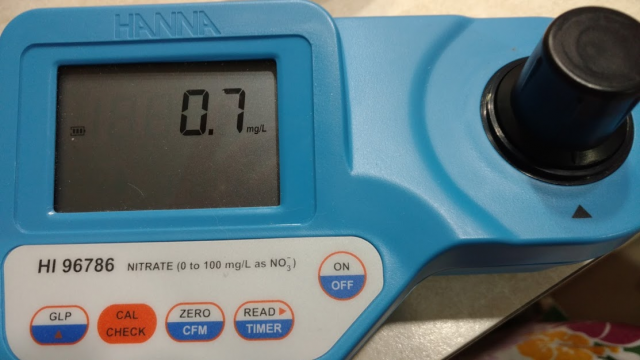The links you posted have a lot of information but have not seen the specific reference to the capability or error % of the nitrate test kits.My current understanding of at-home testing for NO3 nitrate is based on what dw1305 on Planet Catfish posted on the subject. Darrel is a professor and a scientist studying wastewater treatment in addition to being an avid tank keeper.
In a nutshell, API and other home tests can give an indication of the nitrate presence but the actual levels can be up to 10x higher and vary depending what other ions are present in the water being tested because those ions interfere with the measurement to a highly variable degree; also the toxicity associated with such high levels of nitrate often stems not from the nitrate itself but from the preceding nitrite and ammonia.
To begin learning, I'd recommend reading Darrel's posts in these threads and the links he and others (such as TwoTankAmin who is well versed too) provided therein:
ammonia nitrite and nitrate study - PlanetCatfish.com
Images are copyright and may not be reproduced without permission of the copyright holder.www.planetcatfish.com
High Nitrate - PlanetCatfish.com
Images are copyright and may not be reproduced without permission of the copyright holder.www.planetcatfish.com
water changes controversy - Page 2 - PlanetCatfish.com
Images are copyright and may not be reproduced without permission of the copyright holder.www.planetcatfish.com
Perhaps you could reference a specific link.
Here is a test of the Salifert test kit validated with lab test results. Perhaps the inaccuracy you mentioned are due to human error. Any test can be affected by variables such as the steps of the test, contamination, test reagents age etc. For my personal fish keeping I would periodically use both API and Salifert, and take care to follow the directions. If done properly. this will suffice for me.
https://reefhacks.com/how-accurate-are-salifert-test-kits/



